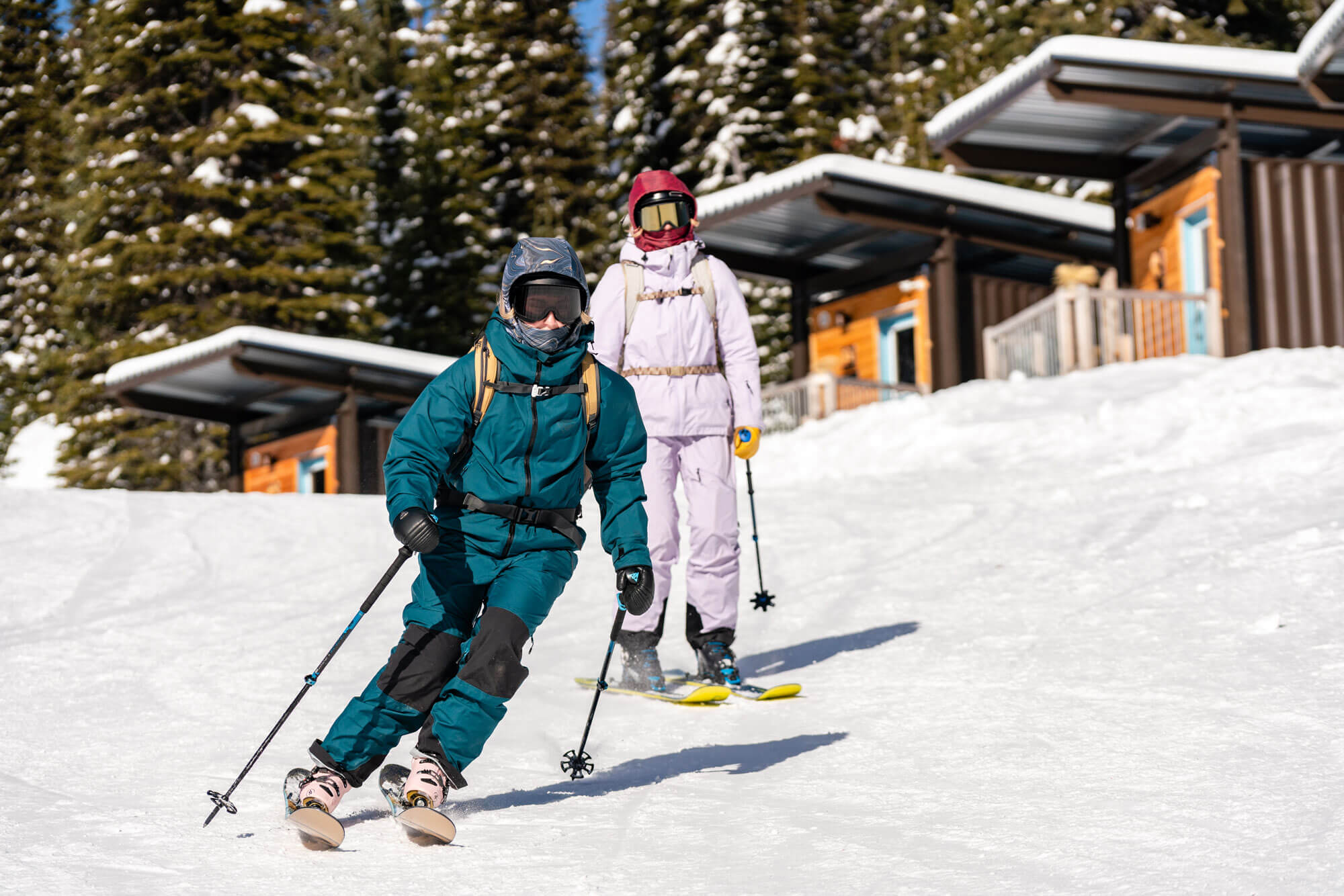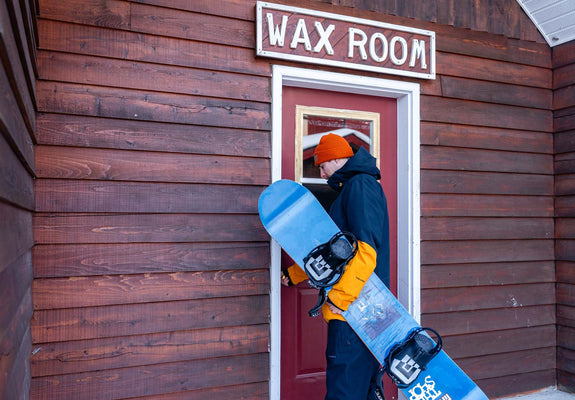To fully enjoy a day on the snow, having the right gear is essential. In this guide we’ll cover all the essential gear for keeping the vibes high whether you're skiing or snowboarding.
- Balaclavas and Beanies
- Gloves and Glove Liners
- Socks
- Base Layers
- Mid Layers
- Outerwear
- Goggles and Helmets
- Tips for Choosing the Right Gear
Balaclavas & Beanies
Balaclavas
A good balaclava protects your face and neck from the cold and wind. Look for features like moisture-wicking and breathability. The classic hood balaclava is a great daily driver. With hinge seams on the side for maximum mobility and material that keeps you warm but can also breathe, this is your one-stop-shop for face protection. Need something warmer? Try the expedition hood, the same design with heavier material. The camber hood is another great option if you want an over-the-helmet-style hood that’s ultra cozy.

Beanies
Beanies provide warmth and style. Our Signature and Essential beanies are perfect choices for their fit, insulation, and style. Great for when you hit the lodge and need something to cover that helmet hair.
Gloves & Glove Liners
Gloves
Whether you prefer finger gloves or mittens is mostly a style choice. Both provide warmth, but mittens generally offer better insulation.
Glove Liners
Glove liners add an extra layer of warmth and are particularly useful in extremely cold conditions. They also protect your hands when you need to remove your gloves by keeping your fingers from getting frozen. Be sure to find a pair that allows you to use your phone screen while they’re on.
Ski Socks
High-quality ski socks prevent blisters and keep your feet warm. Avoid cotton socks, as they retain moisture and can cause discomfort.
Recommendations
Opt for socks with moisture-wicking properties and adequate padding, like a pair of light-weight merino wool socks. No need for super thick socks, there is plenty of great tech out there now that actually works better and is thinner. Plus, you can still move your toes!

Base Layers
Importance of Base Layers
Base layers are crucial for moisture-wicking and insulation. They form the foundation of your ski gear, ensuring you stay dry and warm.
Types of Base Layers
There are different layers for different occasions. It's important to pay attention to the level of thermal regulation your base layer is going to offer. A thicker base might result in wearing a lighter mid-layer and a shell jacket, while a thinner base layer might call for a warmer jacket.
Warmest - For those who run cold, a thicker fabric offering more insulation is great for frigid winter conditions. Our Therma line of base layers are perfect for the coldest mornings on the slopes. The fabric is incredibly soft and insulating, yet still breathes when you need it to.
Middle of the Road - The best option for an all-day adventure. Our Summit Base Layers offer breathability when needed and enough warmth to withstand the winter winds. This is a great option for those who want one base layer that's perfect for first run to closing day.
Lightest - Maximum ventilation makes this layer perfect for spring skiing or even hiking on a spring day. Wear it on or off the slopes, this type of layer is great for every day use. Check out the Skyliner line, a stylish and super breathable base layer option.
Mid Layers
Mid layers add insulation, trapping body heat to keep you warm. When finding a mid layer, try a couple materials and see which suits you best. The best mid-layers are versatile and can be worn on or off the hill, offering extra warmth when necessary but lightweight enough to be breathable.

Outerwear
Outerwear is the first line of defense from wind, snow, and moisture, ensuring you stay dry and comfortable.
Jackets and Pants
Look for features like waterproofing, breathability, and durability in your jackets and pants. Some specific features include a powder skirt, zipper-vents, and a good pocket on the sleeve or chest to hold your pass.
Correlation with Base Layers
Selecting the right base layer often depends on your outerwear. For example, a well-insulated outer layer might pair best with a highly breathable base layer to maximize airflow and comfort.

Goggles and Helmets
Eye protection is crucial. Choose goggles with interchangeable lenses for sunny and low-light conditions. Always wear a helmet for safety, ensuring it fits well.
Tips for Choosing the Right Gear
Climate and Conditions
Adapt your gear to the weather conditions of the ski resort. Colder climates require more insulation, while milder conditions need lighter layers.
Personal Preferences
Comfort and personal style are important. Choose gear that fits well and aligns with your preferences.
Conclusion
Proper layering is essential for a comfortable and safe skiing experience. Each layer, from base to outer, plays a crucial role in keeping you warm, dry, and protected. Be sure to do your research before outfitting yourself.
Explore BlackStrap’s ski gear collection to find the perfect gear for your next adventure. Don’t forget to subscribe to our blog for more expert tips and updates. See ya on the slopes!



